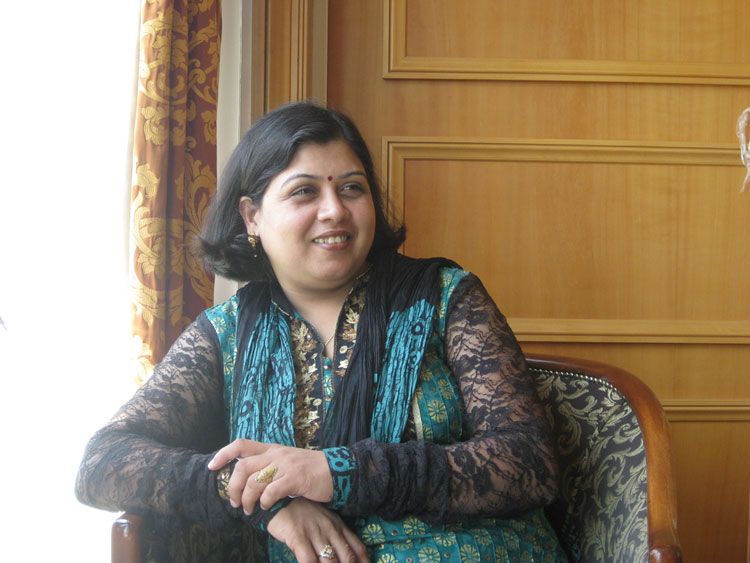I recently came across a TED-X talk (16:48) given in Goa, India by Capt. Raghuraman. In that talk the speaker, an Army Captain in India, and then a businessman-entrepreneur delineates a framework that has its roots in the military warfare. The speaker synthesizes his military, business, and start-up experience to present this framework that is effective in any endeavorfrom a military mission, to launching and scaling a start-up, to getting ready for a TED talk. Although Raghuraman presents that framework in the vernacular of the Indian services (a combination of Hindi, Urdu, and English) in the form of a mnemonic acronym I thought it was compelling enough to translate it to other audiences who remember more easily English acronyms.
In presenting that framework I am also making the connection between the military organizations that date back to prehistoric times of warfare to todays business organization. In fact, todays business organization has a history that is only about two centuries old. The first industrial enterprise was launched after the industrial revolution started spreading in the 18th century and it derived its organizational inspiration from the military, including its hierarchy, command-and-control mindset, and how it carries out its mission in everyday sense of the word.
In his talk Raghuraman uses the mnemonic Z-KITBAG and goes on to take each of the letters and presents to the audience what they mean in the context of the framework that he believes has universal applicability in any human enterprisefrom a start-up to a scale-up to any project, large or small, that needs to be successfully executed. In this blog I plan to translate that acronym in yet another mnemonic form for those who are more comfortable with English with my own spin on what they mean.
My equivalent English acronym for that seven-element framework is FKSTROT (Foxtrot). To fully appreciate the significance of this framework I urge you to watch the TED-X talk for which I have embedded the link at the top. I am providing here my own take on this FKSTROT acronym and framework.
F= Field of view: In any endeavor having a panoramic view of the landscape relevant to the undertaking is a good start. If you are lunching a new business knowing what the market is, who the competitors are, and what likely forces are going to influence your business are few of the items that must be brought into your field of view as one of the seven elements of this framework.
K=Knowledge: Although Raghuraman uses intelligence as the second item for this element in his framework, knowledge is a more appropriate noun for what is relevant; intelligence is one aspect of that knowledge. Knowing all about your market, competition, different forces that are going to affect your business, including regulatory requirements and impending legislation are critical to a solid foundation for the business to succeed.
S= Strategy: For any undertaking having a strategy that is clearly defined helps set the direction for the endeavor, providing a North Star for the leader who is going to move the business forward and succeed in its mission. Strategy defines what is different about you from the competition and what you are going to differently from them to succeed. Without a clear articulation of a strategy that is communicated to all the members and stakeholders confusion can ensue and the undertaking can founder. Strategy is not something you keep changing once set and agreed to.
T= Tactics: This fourth element defies how you are going to execute that strategy (#3) and what approach you are going to take to make sure that the strategy gets executed. Raghuraman gives an example of capturing a certain hill as a strategy (the What). How that hill will be captured will result from the tactics you adopt: Sending an advance party, casing out the place, and then attacking with the right firepower all form the Tactics of the mission.
R= Resources: For any mission to succeed knowing all the resources needed is critical. Too few resources can scuttle a mission and too many resources can result in chaos. So, having the right mix of the needed resources time-phased for their appropriate deployment can make a difference between success and failure.
O= Organization: This is also called Logistics. Merely having the resources is a start, but knowing how to deploy those resources at appropriate times is also a key ingredient for all things to come together. If the sequence in which the Organization (or Operation) does not come together, with the right back-ups and Plan-Bs, then your mission can be in jeopardy.
T= Timing: In his talk Raghuraman calls this synchronization, but it is time sequencing. Those who understand project management know how dependencies of different milestones and their proper sequencing can make or break a project. So, getting everyone involved in an endeavor synched up is critical so that all the previous six elements happen as planned to accomplish the mission.
Although this seven-element framework appears simple, it is not simplistic. Any major failed endeavor can be diagnosed in the light of this framework and lessons learned for preventing such failures in the future. It does not matter what the size of your undertaking is!
Good luck!
Acknowledgement: Id like to thank Don Chislow for brining this TED-X talk to my attention.
| About Author | |

|
Dilip has distinguished himself as LinkedIn’s #1 career coach from among a global pool of over 1,000 peers ever since LinkedIn started ranking them professionally (LinkedIn selected 23 categories of professionals for this ranking and published this ranking from 2006 until 2012). Having worked with over 6,000 clients from all walks of professions and having worked with nearly the entire spectrum of age groups—from high-school graduates about to enter college to those in their 70s, not knowing what to do with their retirement—Dilip has developed a unique approach to bringing meaning to their professional and personal lives. Dilip’s professional success lies in his ability to codify what he has learned in his own varied life (he has changed careers four times and is currently in his fifth) and from those of his clients, and to apply the essence of that learning to each coaching situation. After getting his B.Tech. (Honors) from IIT-Bombay and Master’s in electrical engineering(MSEE) from Stanford University, Dilip worked at various organizations, starting as an individual contributor and then progressing to head an engineering organization of a division of a high-tech company, with $2B in sales, in California’s Silicon Valley. His current interest in coaching resulted from his career experiences spanning nearly four decades, at four very diverse organizations–and industries, including a major conglomerate in India, and from what it takes to re-invent oneself time and again, especially after a lay-off and with constraints that are beyond your control. During the 45-plus years since his graduation, Dilip has reinvented himself time and again to explore new career horizons. When he left the corporate world, as head of engineering of a technology company, he started his own technology consulting business, helping high-tech and biotech companies streamline their product development processes. Dilip’s third career was working as a marketing consultant helping Fortune-500 companies dramatically improve their sales, based on a novel concept. It is during this work that Dilip realized that the greatest challenge most corporations face is available leadership resources and effectiveness; too many followers looking up to rudderless leadership. Dilip then decided to work with corporations helping them understand the leadership process and how to increase leadership effectiveness at every level. Soon afterwards, when the job-market tanked in Silicon Valley in 2001, Dilip changed his career track yet again and decided to work initially with many high-tech refugees, who wanted expert guidance in their reinvention and reemployment. Quickly, Dilip expanded his practice to help professionals from all walks of life. Now in his fifth career, Dilip works with professionals in the Silicon Valley and around the world helping with reinvention to get their dream jobs or vocations. As a career counselor and life coach, Dilip’s focus has been career transitions for professionals at all levels and engaging them in a purposeful pursuit. Working with them, he has developed many groundbreaking approaches to career transition that are now published in five books, his weekly blogs, and hundreds of articles. He has worked with those looking for a change in their careers–re-invention–and jobs at levels ranging from CEOs to hospital orderlies. He has developed numerous seminars and workshops to complement his individual coaching for helping others with making career and life transitions. Dilip’s central theme in his practice is to help clients discover their latent genius and then build a value proposition around it to articulate a strong verbal brand. Throughout this journey, Dilip has come up with many groundbreaking practices such as an Inductive Résumé and the Genius Extraction Tool. Dilip owns two patents, has two publications in the Harvard Business Review and has led a CEO roundtable for Chief Executive on Customer Loyalty. Both Amazon and B&N list numerous reviews on his five books. Dilip is also listed in Who’s Who, has appeared several times on CNN Headline News/Comcast Local Edition, as well as in the San Francisco Chronicle in its career columns. Dilip is a contributing writer to several publications. Dilip is a sought-after speaker at public and private forums on jobs, careers, leadership challenges, and how to be an effective leader. |
Website: http://dilipsaraf.com/?p=2801
Disclaimer: Please use this channel at your own discretion. These articles are contributed by our users. We are not responsible or liable for any problems related to the utilization of information of these articles.












